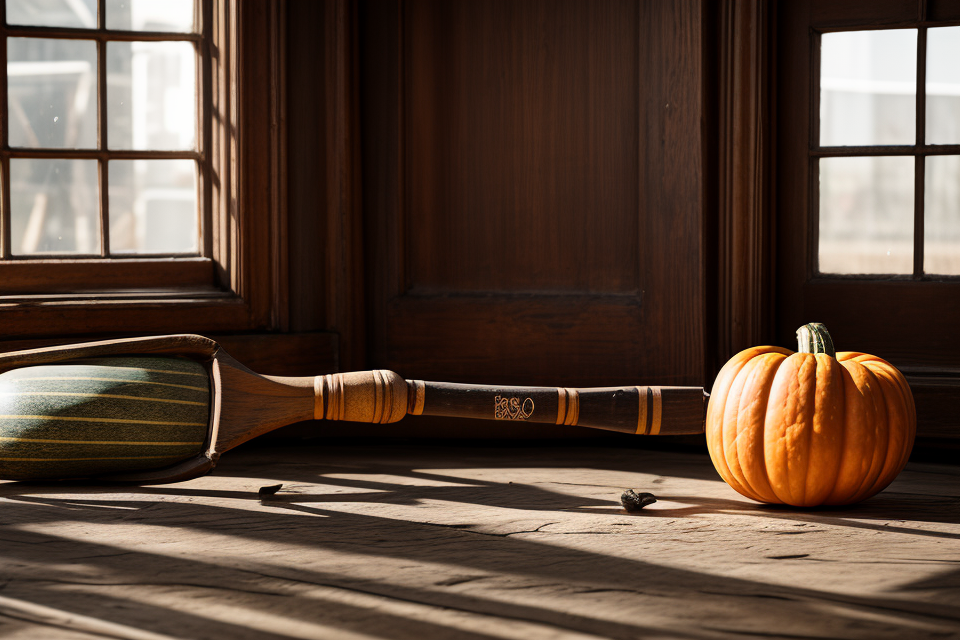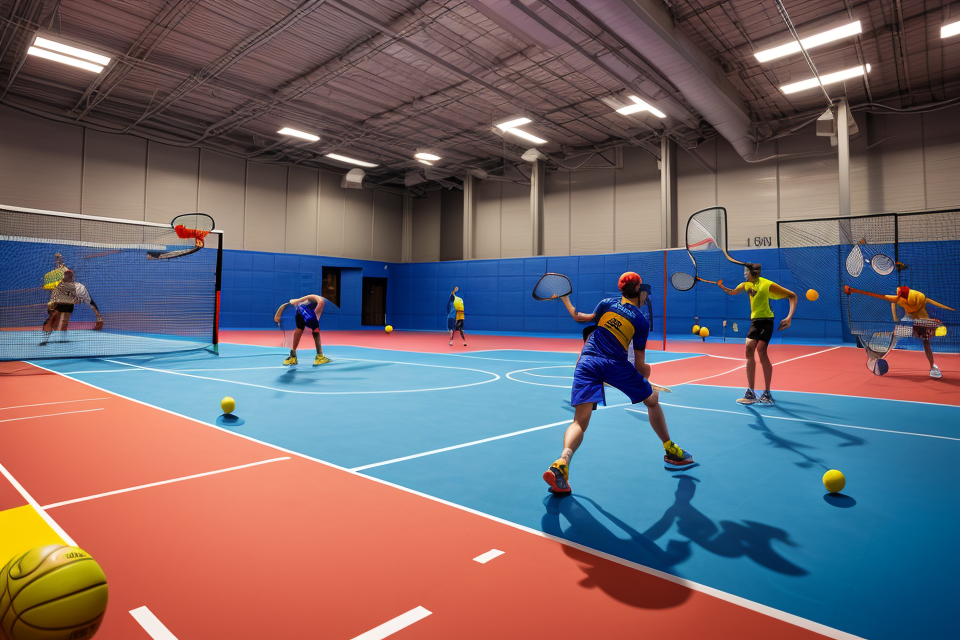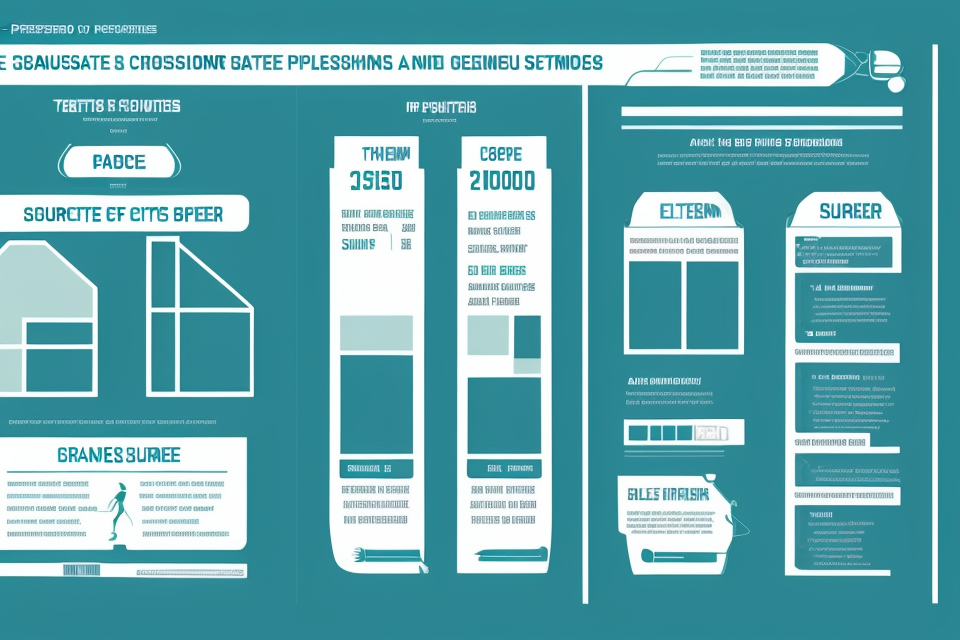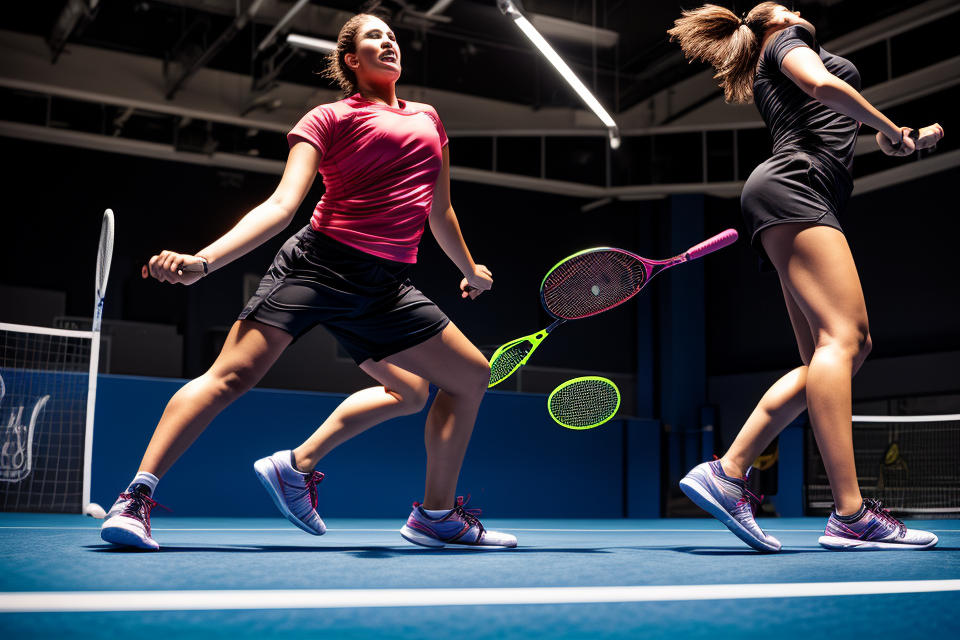Squash is a sport that requires precision, speed, and power. The right equipment can make all the difference in your game. But does a good squash racket really make a difference? In this article, we will explore the impact of a high-quality squash racket on your performance and how it can enhance your game. From the materials used to the weight and balance, we will delve into the intricacies of selecting the perfect racket for your playing style. Whether you’re a beginner or a seasoned pro, this article will provide valuable insights on how to elevate your game with the right tool. So, grip your racket and get ready to take your squash game to the next level!
Yes, a good squash racket can make a significant difference in your game. A high-quality racket will have a better balance, control, and power, which can help you improve your shots and overall performance on the court. It can also help reduce the risk of injury by providing better shock absorption. However, it’s important to note that while a good racket can help, it’s not a magic solution. Ultimately, skill and technique are still crucial factors in determining your success on the court.
Understanding the Importance of Squash Rackets
Factors Affecting Squash Performance
Weight and Balance
One of the primary factors that can impact squash performance is the weight and balance of the racket. A racket that is too heavy can make it difficult to maneuver and control, while a racket that is too light may lack power and control. The ideal weight and balance will vary depending on the player’s strength and playing style. A well-balanced racket will allow for better control and precision, making it easier to hit accurate shots and maintain balance during play.
String Tension and Pattern
The string tension and pattern of a squash racket can also affect performance. String tension refers to the amount of force required to stretch the strings to their maximum length. A higher tension will result in a stiffer and more powerful racket, while a lower tension will provide more control and maneuverability. The string pattern, on the other hand, refers to the number of strings and their arrangement. A higher string pattern will result in more control and precision, while a lower string pattern will provide more power and speed.
Grip Size and Shape
The grip size and shape of a squash racket can also impact performance. A grip that is too small or too large can make it difficult to hold the racket and control it during play. The ideal grip size and shape will vary depending on the player’s hand size and playing style. A comfortable grip will allow for better control and precision, making it easier to hit accurate shots and maintain balance during play.
Material and Technology
The material and technology used in a squash racket can also affect performance. Different materials, such as graphite or titanium, can provide different levels of power, control, and durability. Advanced technologies, such as carbon fiber construction or vibration dampening systems, can also enhance the performance of a racket. The ideal material and technology will vary depending on the player’s needs and preferences. A racket that is made with high-quality materials and advanced technology will typically provide better performance and longer lifespan.
How a Good Racket Can Improve Your Game
- Increased control and accuracy
- A well-designed squash racket provides better control over the ball, allowing for more precise shots and increased accuracy.
- This is achieved through a combination of factors such as weight distribution, balance, and flexibility.
- A good racket will enable you to hit shots with more precision, making it easier to hit targets and put pressure on your opponent.
- More power and speed
- A good squash racket can give you an edge in terms of power and speed.
- This is because a well-designed racket can help you generate more force behind your shots, enabling you to hit with greater speed and power.
- A good racket will also allow you to hit with more consistency, enabling you to maintain a high level of intensity throughout the game.
- Better balance and maneuverability
- A good squash racket will provide better balance and maneuverability, allowing you to move around the court with greater ease and confidence.
- A good racket will enable you to change direction quickly and move around the court with more agility, giving you a significant advantage over your opponent.
- Durability and longevity
- A good squash racket is built to last, providing durability and longevity.
- This is important because a racket that can withstand the demands of regular use will last longer and perform better over time.
- A good racket will also be more resistant to damage, enabling you to continue playing at your best for longer.
Choosing the Right Squash Racket
Factors to Consider
When choosing a squash racket, there are several factors to consider. Here are some of the most important ones:
- Your playing style and strengths: The right squash racket can help you maximize your strengths and improve your weaknesses. For example, if you prefer a more aggressive playing style, you may want a racket with a larger sweet spot and more power. On the other hand, if you prefer a more defensive style, you may want a racket with more control and precision.
- Your level of experience and skill: If you are a beginner, you may want a racket that is easier to control and has a more forgiving sweet spot. As you become more experienced and skilled, you may want a racket that offers more control and precision.
- Your budget and preferences: Squash rackets can range in price from around $50 to over $200. It’s important to consider your budget and preferences when choosing a racket. Keep in mind that a more expensive racket does not necessarily mean it is the best choice for you. It’s important to consider all the factors listed above and choose a racket that best fits your needs.
Popular Squash Racket Brands and Models
When it comes to choosing the right squash racket, there are several popular brands and models to consider. Some of the most well-known brands include:
- [Brand 1]: This brand is known for its high-quality rackets that offer excellent control and precision. Their rackets are popular among professional players and are designed with advanced technology to enhance performance.
- [Brand 2]: This brand is known for its versatile rackets that are suitable for a range of playing styles. Their rackets are designed with a combination of power and control, making them a popular choice for players who want a racket that can handle different situations on the court.
- [Brand 3]: This brand is known for its lightweight rackets that offer excellent maneuverability and speed. Their rackets are designed with a focus on control and precision, making them a popular choice for players who want to hit accurate shots and maintain control of the game.
Each brand and model offers unique features and benefits, so it’s important to consider your individual playing style and preferences when choosing a racket. Whether you’re a beginner or an experienced player, investing in a high-quality squash racket can make a significant difference in your game.
Evaluating the Performance of a Squash Racket
Key Features to Assess
When evaluating the performance of a squash racket, there are several key features that should be assessed. These features can have a significant impact on the racket’s overall performance and can affect various aspects of your game.
- Weight and balance: The weight and balance of a squash racket are critical factors to consider. A well-balanced racket will provide better control and maneuverability, while a heavier racket can generate more power. The ideal weight and balance can vary depending on your playing style and preferences.
- String tension and pattern: The string tension and pattern can also impact the racket’s performance. Higher string tension can provide more control and precision, while lower string tension can generate more power. The string pattern can also affect the racket’s performance, with a denser string pattern providing more control and a more open pattern generating more power.
- Grip size and shape: The grip size and shape can also impact your performance on the court. A larger grip can provide more control, while a smaller grip can provide more power. The shape of the grip can also affect your grip and comfort during gameplay.
- Material and technology: The material and technology used in the construction of the racket can also impact its performance. Some rackets are made from carbon fiber, which provides a lightweight and durable construction, while others may use other materials such as graphite or kevlar. Additionally, the use of technology such as aerodynamic shapes or vibration dampening systems can affect the racket’s performance.
In conclusion, these key features are essential to assess when evaluating the performance of a squash racket. Understanding how these features can impact your game can help you make an informed decision when selecting the right racket for your needs.
Testing and Reviewing Squash Rackets
When it comes to evaluating the performance of a squash racket, testing and reviewing is an essential aspect. The performance of a squash racket can be determined through various means, including personal experience and feedback, professional reviews and ratings, and comparison with other rackets.
Personal experience and feedback
Personal experience and feedback is an essential factor in determining the performance of a squash racket. When a player uses a particular racket, they can provide feedback on its performance based on their experience. The feedback can include the racket’s speed, control, power, and maneuverability. This feedback can be valuable to other players who are considering purchasing the same racket.
Professional reviews and ratings
Professional reviews and ratings are another way to evaluate the performance of a squash racket. Professional reviewers and raters have extensive experience and knowledge of squash rackets. They can provide detailed and objective reviews and ratings of the racket’s performance. These reviews and ratings can be found on various websites and online forums.
Comparison with other rackets
Comparing a squash racket with other rackets is another way to evaluate its performance. When a player compares a racket with other rackets, they can determine its strengths and weaknesses. They can also compare the racket’s performance with similar rackets in terms of speed, control, power, and maneuverability. This comparison can help players make informed decisions when purchasing a squash racket.
Maintaining and Upgrading Your Squash Racket
Proper Care and Maintenance
When it comes to improving your squash game, having the right equipment is essential. One of the most important pieces of equipment is your squash racket. While a good racket can help you improve your game, it is also important to maintain and upgrade your racket to ensure it continues to perform at its best.
Cleaning and Drying
After each use, it is important to clean your squash racket to remove any dirt or debris that may have accumulated on the strings or frame. This will help prevent damage to the racket and ensure it continues to perform at its best.
To clean your squash racket, you can use a soft cloth or brush to gently remove any debris. If there is stubborn dirt or grime, you can use a mild detergent and water solution to clean the racket. Be sure to rinse the racket thoroughly with clean water and allow it to air dry completely before storing it.
Restringing and Restringing Tension
Over time, the strings on your squash racket will wear out and need to be replaced. Restringing your racket is a simple process that can be done at home or by a professional stringer.
When restringing your racket, it is important to ensure that the strings are properly tensioned. This will help improve the performance of the racket and prevent damage to the frame.
Replacing Grips and Parts
In addition to restringing your racket, you may also need to replace other parts of the racket, such as the grip or the frame. A worn or damaged grip can affect your ability to control the racket, while a damaged frame can impact the overall performance of the racket.
If you notice any issues with your squash racket, it is important to have it inspected by a professional to determine if any parts need to be replaced. By maintaining and upgrading your squash racket, you can ensure that it continues to perform at its best and help improve your game.
Upgrading and Customizing Your Racket
When it comes to upgrading and customizing your squash racket, there are several options available to you. From string tension and pattern adjustments to grip size and shape modifications, adding weights or grip tape, and replacing parts with advanced materials, there are numerous ways to enhance your racket’s performance and improve your game.
String Tension and Pattern Adjustments
One of the most straightforward ways to customize your squash racket is by adjusting the string tension and pattern. Tighter strings will provide more control and power, while looser strings will offer more touch and maneuverability. Changing the string pattern can also have a significant impact on your racket’s performance. For example, a higher string pattern will produce more spin, while a lower string pattern will offer more control and stability.
Grip Size and Shape Modifications
Another way to customize your squash racket is by modifying the grip size and shape. A larger grip can provide more control and stability, while a smaller grip can offer more maneuverability and speed. Additionally, some players prefer a flatter grip, while others prefer a more rounded grip. Experimenting with different grip sizes and shapes can help you find the one that best suits your playing style.
Adding Weights or Grip Tape
Adding weights to your squash racket can help improve your power and control. This is particularly useful for players who struggle with power or accuracy. Adding weights to the head of the racket can increase its stability and provide more power, while adding weights to the handle can improve control and maneuverability. Additionally, some players prefer to use grip tape to improve their grip and control.
Replacing Parts with Advanced Materials
Finally, some players choose to replace certain parts of their squash racket with advanced materials. For example, replacing the frame with a carbon fiber frame can improve the racket’s durability and performance. Similarly, replacing the grip or strings with advanced materials can improve your racket’s overall performance and help you gain an edge on the court.
The Impact of Squash Racket Technology on Performance
Advances in Squash Racket Design
Aerospace-grade materials
The use of aerospace-grade materials in squash racket design has become increasingly prevalent in recent years. These materials, which are typically used in the construction of aircraft and spacecraft, are lightweight yet extremely strong and durable. By incorporating these materials into the design of squash rackets, manufacturers have been able to create lighter and more durable rackets that are able to withstand the rigors of high-impact sports like squash.
High-tech string materials
Another advancement in squash racket design has been the use of high-tech string materials. These materials are designed to provide superior tension and control, allowing players to hit the ball with greater accuracy and power. Additionally, they are designed to be more durable than traditional string materials, which means that they can withstand the constant impact of the ball without breaking or losing tension.
Improved frame construction
In addition to the use of advanced materials, squash racket design has also evolved to include improved frame construction techniques. These techniques are designed to increase the strength and stability of the racket, while also reducing its overall weight. Some of the most common frame construction techniques include the use of graphite and other lightweight materials, as well as the use of reinforced corners and other structural elements.
Integrated technologies
Finally, squash racket design has also incorporated a range of integrated technologies that are designed to enhance the performance of the racket. These technologies can include things like vibration dampening systems, which help to reduce the impact of the ball on the racket and minimize the risk of injury. Other integrated technologies include shock-absorbing grips, which help to reduce hand and wrist fatigue during long matches, and aerodynamic designs, which help to improve the speed and accuracy of the ball.
Exploring the Latest Innovations
In the world of squash, technological advancements have revolutionized the sport, providing players with an array of racket designs that cater to various playing styles. As technology continues to evolve, it begs the question: does a good squash racket truly make a difference in your game?
Advanced Aerodynamics
One of the latest innovations in squash racket technology is the integration of advanced aerodynamics. Designers have developed rackets with streamlined shapes and materials that reduce air resistance, allowing for faster serves and more precise shots. These innovative designs help players generate more power behind their shots, enabling them to hit with greater accuracy and speed.
Enhanced Strength and Durability
Another notable innovation in squash racket technology is the increased focus on enhanced strength and durability. Manufacturers have begun incorporating cutting-edge materials, such as carbon fiber and graphite, to create rackets that are both lightweight and robust. These materials not only provide a higher level of performance but also extend the lifespan of the racket, reducing the need for frequent replacements.
Improved Dampening and Vibration Control
Finally, racket designers have been working on improving dampening and vibration control in squash rackets. By incorporating innovative technologies such as vibration-absorbing materials and unique construction techniques, they have created rackets that offer a more comfortable grip and reduce the impact on the player’s arm and hand. This innovation enables players to perform at their best during long matches, without experiencing fatigue or discomfort.
Overall, these latest innovations in squash racket technology have transformed the sport, providing players with a wide range of options to suit their individual playing styles. Whether you’re a professional player or a recreational enthusiast, investing in a high-quality squash racket can significantly enhance your performance and improve your overall game.
The Verdict on the Role of Squash Rackets in Player Performance
- How much of a difference does a good squash racket make?
- The impact of a good squash racket on a player’s performance can be significant. A well-made racket can provide more control, power, and precision, allowing players to execute shots with greater accuracy and force.
- A good racket can also help reduce the risk of injury by providing better shock absorption and reducing the vibrations that occur during play.
- Is it worth investing in a high-quality racket?
- The answer to this question depends on several factors, including the player’s skill level, playing style, and budget.
- For beginners or casual players, a mid-range racket may be sufficient, as it will provide enough performance to improve their game without breaking the bank.
- However, for advanced players or those with a more competitive mindset, investing in a high-quality racket can make a significant difference in their performance and overall success on the court.
- What factors should you consider when choosing a squash racket?
- When choosing a squash racket, there are several factors to consider, including the weight, balance, and flexibility of the racket, as well as the string tension and type of grip.
- Additionally, players should consider their playing style and the type of shots they typically use, as well as their strengths and weaknesses, in order to choose a racket that best suits their needs.
- It is also important to try out different rackets before making a purchase, as each player’s physical attributes and technique can affect the way the racket performs on the court.
FAQs
1. What is the difference between a good and a bad squash racket?
A good squash racket is designed with high-quality materials and construction that allow for optimal performance. It will have a better balance, control, and power, which can greatly improve your game. A bad squash racket, on the other hand, is made with low-quality materials and poor construction, which can result in a lack of control and power, making it difficult to play at a high level.
2. How does a good squash racket improve your game?
A good squash racket can improve your game in several ways. Firstly, it provides better control, which allows for more precise shots and movements. Secondly, it offers better power, which enables you to hit harder and faster shots. Thirdly, a good squash racket has a better weight distribution, which provides better balance and stability during play. Finally, a good squash racket has a better string tension, which results in more spin and control.
3. What are the factors to consider when choosing a good squash racket?
When choosing a good squash racket, there are several factors to consider. Firstly, the weight and balance of the racket, which should be comfortable and easy to handle. Secondly, the string tension, which should be appropriate for your playing style and level. Thirdly, the materials used in the construction of the racket, which should be durable and of high quality. Finally, the price, which should be reasonable and reflect the quality of the racket.
4. Is it necessary to have an expensive squash racket to play well?
Having an expensive squash racket is not necessary to play well, but it can greatly improve your game. Expensive rackets are typically made with high-quality materials and have better construction, which can provide better control, power, and stability. However, there are many good squash rackets available at different price points, so it is possible to find a good racket that fits your budget.
5. How often should I replace my squash racket?
The frequency with which you should replace your squash racket depends on how often you play and the condition of the racket. If you play regularly and your racket shows signs of wear and tear, such as cracks or loose strings, it may be time to replace it. Additionally, if you have been using the same racket for a long time and your game has plateaued, a new racket may provide the boost you need to improve.










